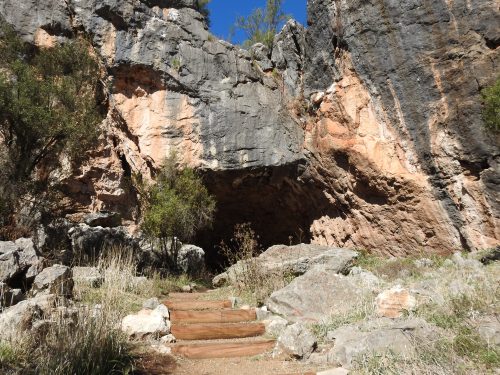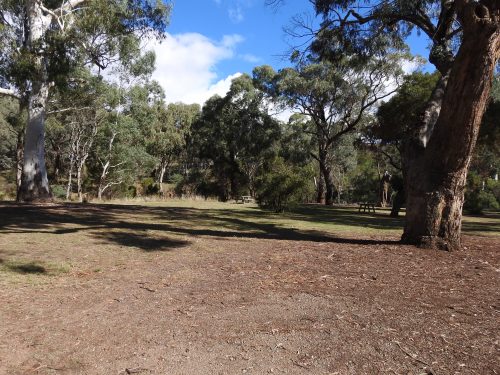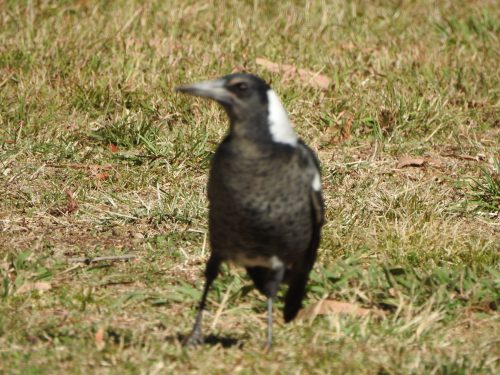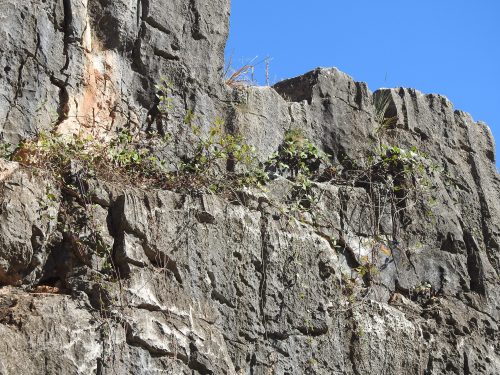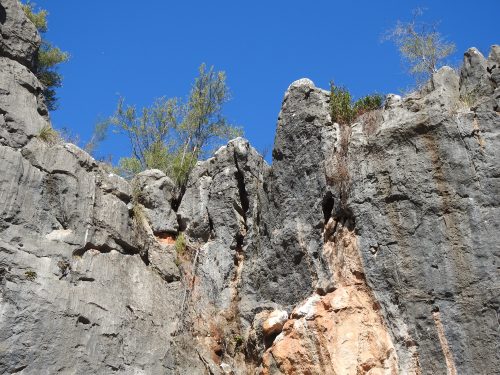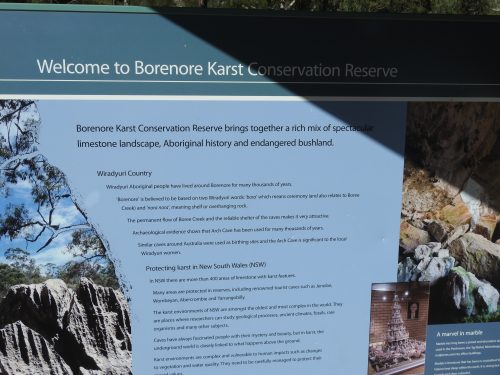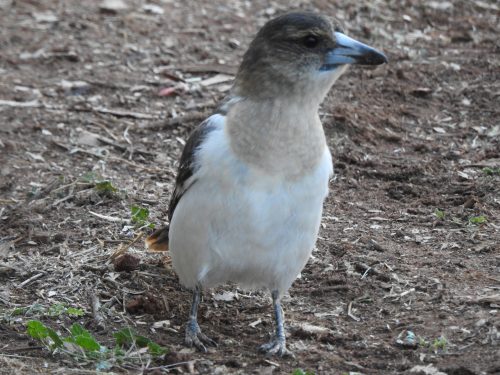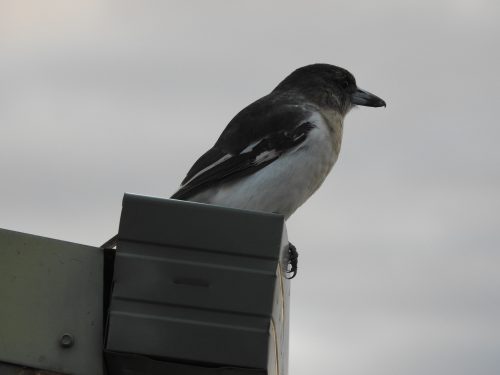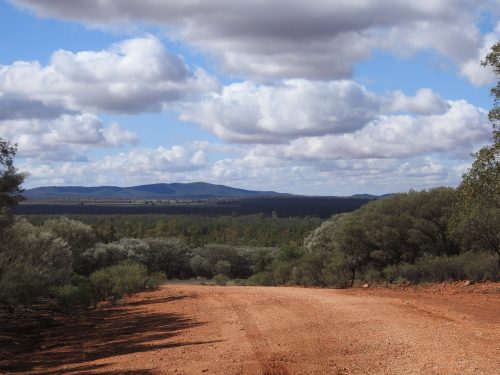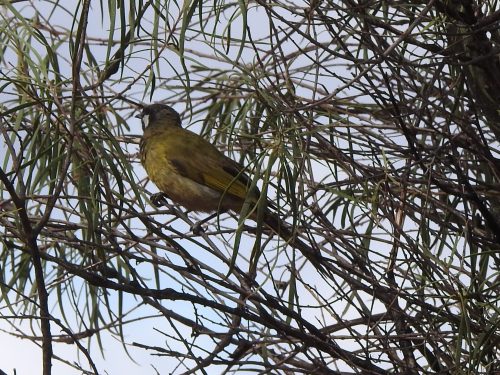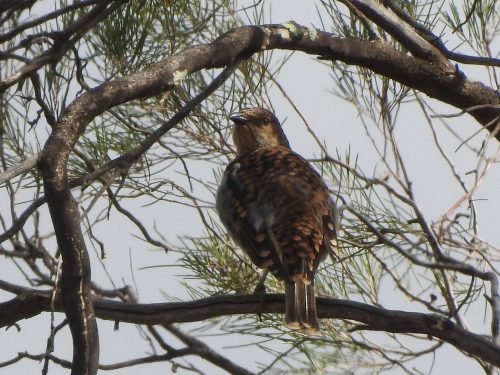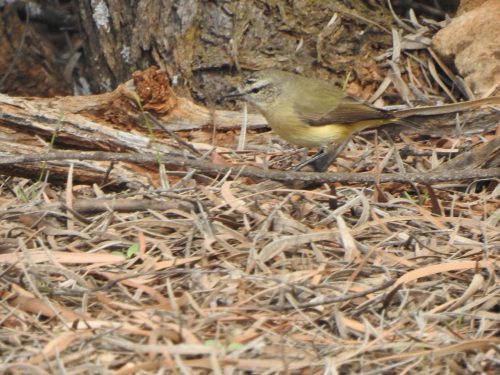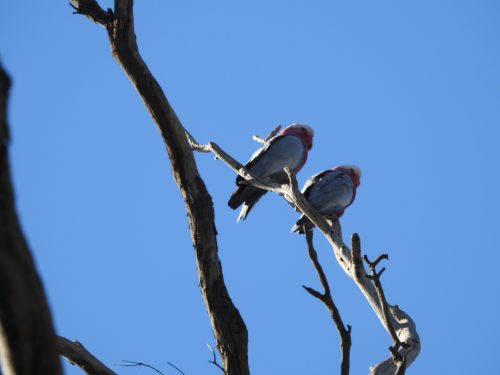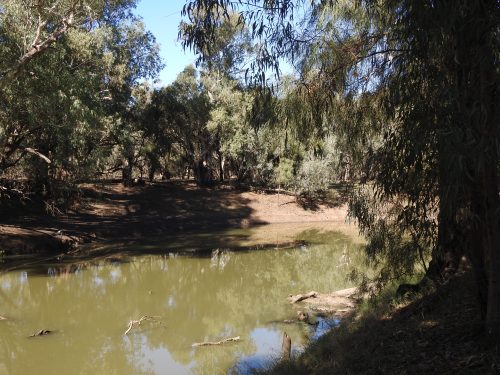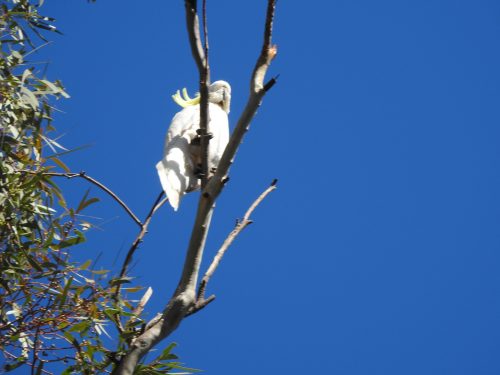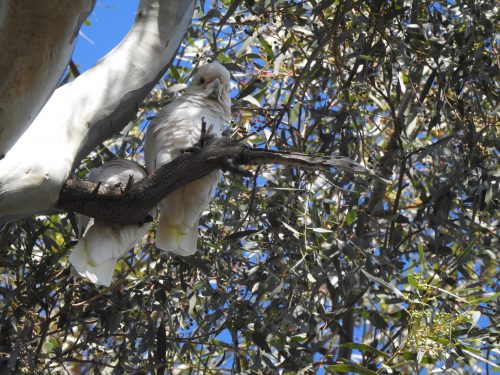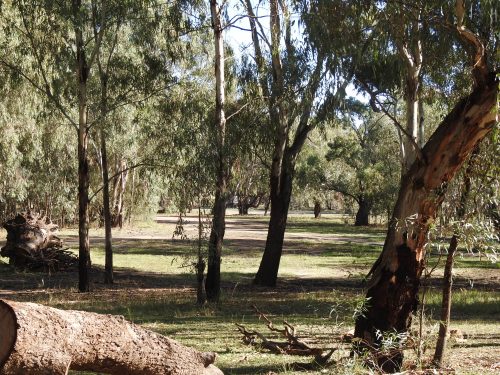Borenore Karst Conservation Reserve, Orange
On my way to Sydney early in May of this year, I travelled between Lake Cargelligo and the city of Orange in New South Wales. As I approached Orange, I saw a tourist sign pointing to the Borenore Karst Conservation Reserve. I had been looking for a place to pull off the road, have lunch and do a spot of birding while I ate. This reserve seemed to fit the criteria well, so I pulled off onto a rocky dirt track leading down into the valley below. While it was a little bumpy, a non-4WD car can negotiate this track with care. There were no such concerns with my Ford Ranger 4WD.
The picnic ground (photo above) was pleasant with scattered trees and several picnic tables for visitors to use. While I ate my lunch I made a list of the birds seen or heard.
Bird List:
- Australian Magpie (photo below)
- Australian Raven
- Noisy Miner
- Laughing Kookaburra
- Red Wattlebird
- Galah
- White-plumed Honeyeater
- Sulphur-crested Cockatoo
- Crimson Rosella
- Rufous Whistler
- Striated Pardalote
- Welcome Swallow
It is not a big list, but the wind was chilly and it was just after midday which is generally not a good time for birding. My opinion is that this would be a great place to go birding on a sunny, spring day, preferably early in the morning or just before sunset.
The main attraction of this reserve is the cave next to the picnic ground. In the photos below (and above) you can see some of the rocky landscape which surrounds the picnic grounds. There is a walk visitors can take through one of the caves which I would like to have explored, but my torch was in a hard to get to box in the back of the ute. I really needed to get on the road again, anyway, so I gave the cave exploration a miss. I will be better prepared next time I pass this way.
Immature Pied Butcherbird
In my last post, I wrote about the quiet day of birding I had at Round Hill Nature Reserve north-west of Lake Cargelligo. I was on my way to Sydney to visit family and made a little detour on the way. The birding was not up to my expectations but I enjoyed the visit anyway. It is certainly a better place to visit in the Spring and early Summer when more of the vegetation is in flower.
Mount Hope
After my visit to the reserve, I continued on towards Mount Hope, a small community of a few houses and a hotel. I stopped here for a few minutes to check out what birds were around but only managed to see seven species. I then drove south towards Hillston, stopping briefly at a roadside rest area. At that point, I had good views of Mallee Ringneck parrots and Blue Bonnet parrots as they flew across the road in front of my car.
Lachlan Valley Way
A little further along in the locality known as Wallenthery I turned east and took the Lachlan Valley Way back towards Lake Cargelligo. This road follows the Lachlan River. At one point I had good views of a Little Eagle and four Yellow-billed Spoonbills flying overhead. Nearby were several hundred Galahs (with a handful of Sulphur-crested Cockatoos keeping them company), a family of six White-winged Choughs and a Wedge-tail Eagle flying low. I also saw a solitary Emu, plenty of Apostlebirds and several small flocks of Blue Bonnet parrots.
At this point, the sun was setting quickly and the clouds were moving in making photography tricky. I only wished that I had more time to spend in this area to capture photos of some of the species mentioned and to seek out others that I may have missed.
Pied Butcherbird
When I returned to my cabin in the lovely caravan park, I was able to get a few shots of the resident Pied Butcherbird shown in the photos above and below. If you look closely at these photos, you will see that the bird has a brown throat and chest meaning that this is an immature bird. It hasn’t yet developed the black throat of the adult bird. If you click on this link, you will see a photo of an adult bird taken earlier in my trip.
This young bird was perched on the gutter of the cabin next door before it swooped down to catch a tasty dinner from the ground. The lawn in that part of the park had been disturbed earlier by one of the park gardeners weeding it. It was a fitting end to a good day’s birding despite some minor disappointments.
Good birding,
Trevor
Quiet birding day at Round Hill
During my stay in Lake Cargelligo last month, I planned on staying two nights and having a full day of birding around the district. My main aim was to visit the Round Hill Nature Reserve north-west of Lake Cargelligo. I had previously experienced this reserve some 12 years ago. You can read about that visit in the further reading section below.
Bogged
The whole region around this reserve and for a radius of over 100 kilometres there was evidence of recent heavy rain. Lake Cargelligo had recorded over 50 mm (2 inches) of rain in the days just before I arrived. I was therefore very cautious about getting off the sealed road and onto the dirt tracks leading through the reserve. I did manage to briefly get bogged in the mud at one point, but fortunately, the front wheels were on firm ground and putting my vehicle briefly into 4WD got me out in seconds.
Lunchtime birding
I found a good spot on the firm ground off the track to park and have my packed lunch and a cup of tea. While I ate and drank I kept a record of the birds I saw and heard. It was disappointing, however, that the bush surrounding me was very quiet. I had observed on the way in that not many of the mallee trees were in flower. Consequently, there were very few honeyeaters around. I did get one reasonable photo of a White-eared Honeyeater (see photo below). That was the only glimpse of this bird I had and you can only just see the white patch on its ear.
I the distance I could hear a Crested Bellbird but it seemed too far off to chase up for a photo. Two Ringneck Parrots flew past me at one point. They were probably the Mallee Ringneck sub-species. At one point I saw a single bird that puzzled me. I chased after it and approached reasonably close but the light was coming from behind the bird making identification difficult. It was not doing anything of note, nor did it call. These are clues helping one to identify a bird. I managed a few photos but didn’t hold out much hope of getting a good shot.
Thankfully, by enhancing the photos digitally a little I could easily see that I had seen a Spotted Bowerbird, not a species I have seen often in my travelling (photo below).
After lunch, I moved to a short track on top of the crest in the road, right next to Round Hill itself. This proved far more fruitful and I added the following species to my modest list:
- Australian Raven: several seen and others calling.
- Weebill – about 8 seen and others calling.
- Yellow-rumped Thornbill – about five seen and one photographed (see below).
- Chestnut-rumped Thornbill – only one sighted briefly.
- Varied Sittella – a small group of 4 which moved on before I could focus my camera on them.
- Australian Magpie – several seen along the road.
- Rufous Whistler – one calling nearby.
- Grey Shrike-thrush – one calling nearby.
- Spiny-cheeked honeyeater – just one seen.
The only other bird I saw was a male Red-capped Robin. I remember taking a photo of a male robin in exactly the same spot on my visit 12 years ago. This time I was not so lucky. I waited patiently for some time for the bird to come into view again but to no avail.
I will post another trip report in a few days’ time.
Good birding,
Trevor
Further reading:
Birding at Euabalong
Last month I drove from home in Murray Bridge to my son’s home in Sydney. At just over 1300 kilometres, it is a drive which can be easily done in two days. In more recent trips over there, I have chosen a variety of routes in order to see more of this wonderful land in which we live. On my most recent trip, I took four days to get there, planning to do some birding along the way.
I stayed for two nights in a cabin in the lovely Lake Cargelligo Caravan Park. This town is situated in the mid-west of New South Wales. It is, in fact, almost mid-way from anywhere in the state. The town caters for most needs of travellers but the area has suffered during the recent years of drought. By way of contrast, the area around Lake Cargelligo had received good falls of rain in the few weeks leading up to my visit. Water was lying everywhere, particularly on the sides of all roads. I hope that this good rain will help the farmers recover from their recent drought.
On the day after my arrival, I had planned to do a whole day of birding in the area. My first stop was at the small community of Euabalong which is about a half-hour drive north. The Lachlan River flows through town (see photo below) and it was certainly worth a stop to observe the local bird population.
I found a dirt track leading to the banks of the river and stopped for a while to make a list of the birds I could see and hear. The local Sulphur-crested Cockatoos (photo below) were making a terrible racket. They were screeching loudly and flying around erratically. I then spotted the cause of the upset. A Little Eagle and a Wedge-tailed Eagle were swooping low over the eucalypt trees where the cockatoos had been perched. They must have been looking for a mid-morning snack. I only saw the two eagles momentarily before they glided out of view. There was no opportunity to get a photo or two. Some Little Corellas (photo below) and Galahs (photo above) were also a part of the ruckus.
After leaving the picnic area next to the Lachlan River, I drove slowly around the small town (population less than 200) to add to my list of birds seen or heard. I could easily have added to this list by stopping elsewhere in the town, but other places were calling me to keep going.
Here is a list of birds I listed:
- Australian Raven (several)
- Crested Pigeon (2)
- Magpie-lark (2)
- Red-rumped Parrot (4)
- Galah (about 30)
- Sulphur-crested Cockatoo (100+)
- Little Eagle (1)
- Wedge-tailed Eagle (1)
- Black-backed Magpie (2)
- Peaceful Dove (1 heard)
- Apostlebird (5)
- House Sparrow (30)
- Welcome Swallow (2)
- Pied Butcherbird (1)
- Little Corella (2 photographed but there would have been more in the flying flock)
My next stop was Euabalong West, just several kilometres to the west. There I added the following species:
- Superb Parrot (1)
- White-winged Choughs (15)
- Noisy Miner (5)
- Spiny-cheeked Honeyeater (1)
- White=plumed Honeyeater (5)
Happy birding,
Trevor
